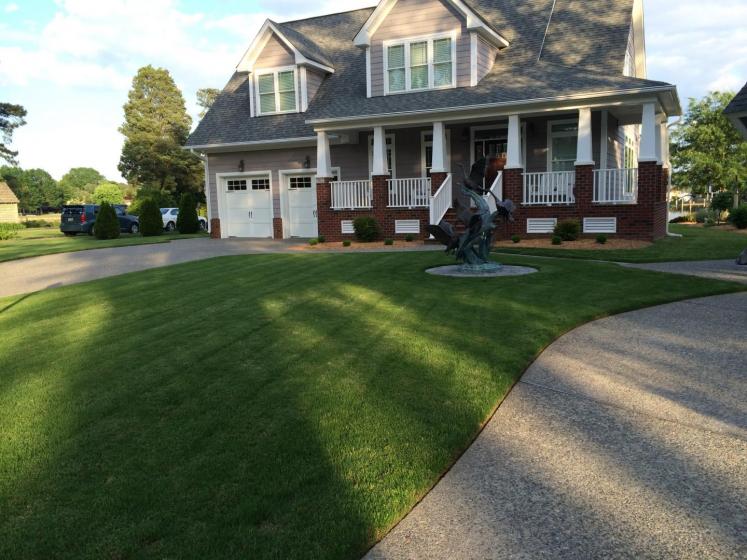by Kathy Van Mullekom
It’s that time of the year – your cool-season fescue lawn looks tired and worn. It’s been a scorching, hot summer, one that’s taken its toll on a grass that prefers cool temperatures and naturally goes dormant in summer. I’ve had fescue grass most of my life, and it’s a turf that needs TLC to stay green and healthy. Which is why I always give it the special care it needs now through December, so it rewards me with a lush-green carpet many months of the year.
Over the years, Virginia Tech’s Virginia Cooperative Extensions cool-season lawn-care calendar has guided me through that process. The month-by-month listings tell you exactly what to do and when to do it, so there is no guessing game. You can find the calendar – and also one for warm-season lawns like Bermuda and zoysia -- online at http://pubs.ext.vt.edu.
I look forward to the cooler days and nights of September, knowing I can get outdoors and work in my yard without wilting. I hate weeds, so I often hand weed the yard as much as I can but also use a weed killer to spot control minor invaders. Once that’s done, hubby and I broadcast a Virginia Tech-researched and approved turfgrass seed. The annual recommendations by the Virginia and Maryland National Turfgrass Evaluation Program are based on test plots grown in sites such as the Hampton Roads Agricultural Research and Extension Center on Diamond Springs Road in Virginia Beach. You can walk those labeled plots and see for yourself how good grass grows – or does not grow, depending on the variety.
Here’s how to renovate your fescue lawn each fall:
- Before you sow seed, cut the lawn shorter than usual and use a steel rake to scratch the soil’s surface so any seed makes contact with the ground.
- If you play hard on your yard -- and have pets or children who run a lot and pack down soil – you may want to aerate your soil before seeding. A core aerator pulls out small plugs of soil, allowing increased movement of water, nutrients and oxygen in the soil. Aerators can be rented or lawn-care companies provide the service.
- Using a hand-held or push-type drop spreader, sow the seed over your existing lawn. I recall the days as a child when my father used to hand throw seed, doing it in a sweeping motion that covered the yard in a nice, even stand. I have tried but just can’t get it looking as good as he did.
- Avoid using a whirly spreader, which is best for putting down fertilizer, because it will broadcast grass seed into your mulched beds, meaning you will have hundreds of grass seedlings to soon remove.
- Once your seed is down, moisten it – avoid watering too much or you risk moving the seed and rotting it. Instead, water lightly and often, making sure the new seed stays moist until new grass emerges. This is also the time to overseed warm-season lawns like Bermuda and Zoysia with annual rye for wintertime green. Some turf experts, however, warn annual rye can delay warm-season turf’s emergence in spring.
- Now, a word about thatch and the process called dethatching, or removing that tightly packed layer of organic matter between the grass blades and soil surface. Thatch is sort of an old wives’ tale, something people thought they had to do. Thatch really does not build up unless you go weeks between mowings and allow clumps of grass to lie on top of your yard – ick, ugly sight. Grass clippings are your friend because they decompose and return vital nutrients and moisture back into your soil. Just make sure you cut your grass often and use a mulching mower, and you will never have enough thatch to worry about.
- Last, but not least, raise your mower blades and let your fescue lawn grow taller in the cool days of fall, winter and spring. Your lawn will reward you with the lushness of a thick carpet that tickles your toes and makes you feel good all over.
Kathy Van Mullekom gardens in southeastern Virginia Beach; contact her at kvanmullekom@aol.com

